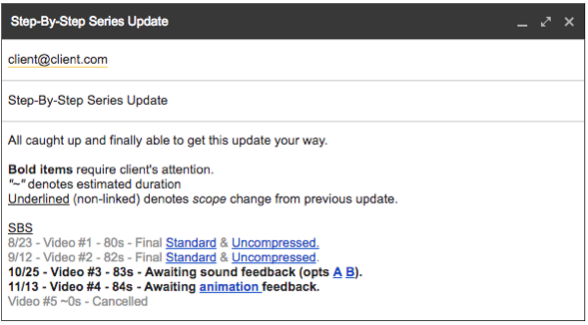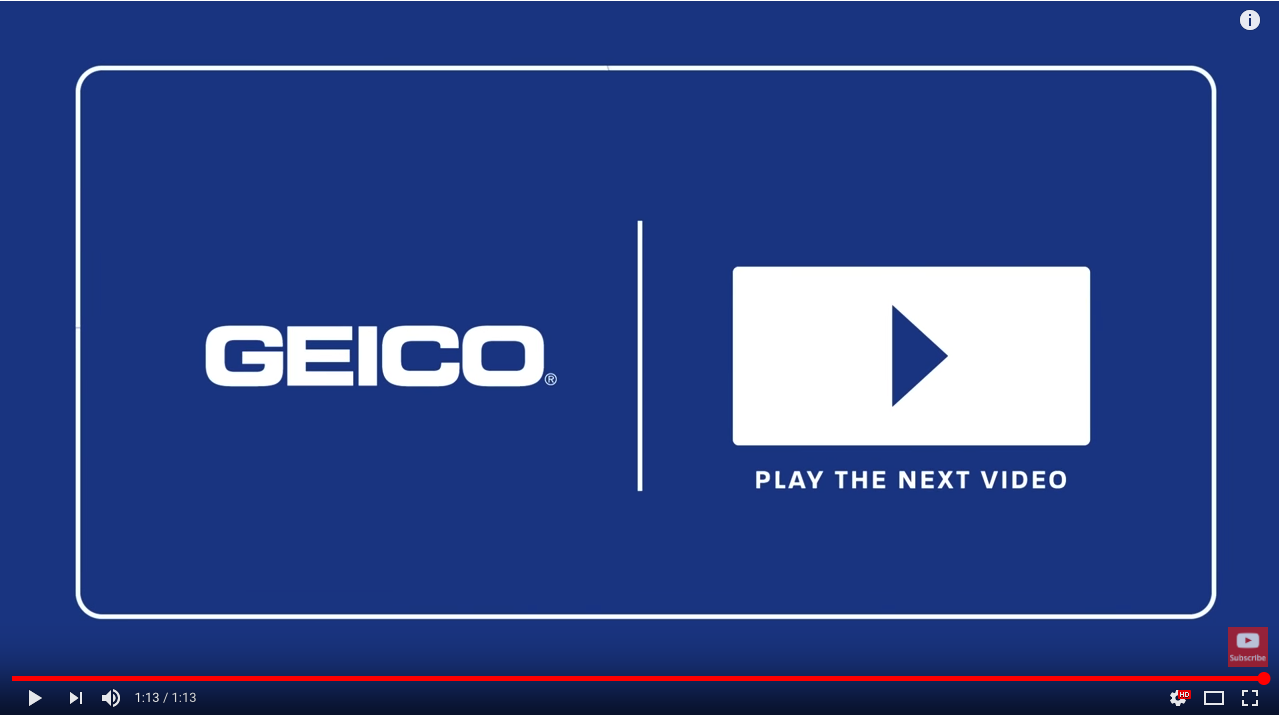Back when Demo Duck was in its infancy, we grew up right alongside something that would help define our identity. Explainer videos. Our clients loved them, and we loved making them. But we started to feel a little like Oprah.
“You get an explainer video! And you get an explainer video! And you get an explainer video!”
We were this close to hiding explainer videos under the chairs in our studio. But over the past seven years, we’ve seen the world of business videos evolve. This isn’t a huge surprise considering how drastically our clients’ industries have evolved too. That’s why we’ve expanded our capabilities to include explainer videos and much, much more.
As part of our ongoing effort to build deeper relationships with our clients, we focused our 2017 on being a true video partner. Someone who can help our clients accomplish a variety of business goals through animated and live action videos.
We’ve done this through long term, multiple project relationships. But recently, we’ve been lucky enough to work on some very exciting projects that we categorize in the “video series” realm. Why? Well, because we’re working on multiple videos that fall under the same title, visual style and goal. Some even have different episode titles. It’s been very exciting.
Why are business video series the next big marketing trend?
Well, we already know that video is making waves across all aspects of the web. On social media, in search engines, on websites—and now many online publications are making the pivot to video too. Given that companies are always looking for new ways to keep their audience engaged in the long term, a few videos won’t cut it anymore.
Planning a consistent release of new online video? Make sure you set expectations with your target audience sooner than later. Whether it’s letting customers know you’ll be sharing a new video each week or internal employees can expect video company updates on the last Friday of the month, creating a schedule and sticking with it is important.
Besides, whether they follow you on the ‘Gram, subscribe to your YouTube channel, reside on your distro-list, or participate in an online educational program building a consistent “fan base” is easier now than ever.

So, now that we know that a business video series is the next big thing in marketing, let’s make one. Easy, right? Not quite. Making a business video series is not without its challenges. It’s much different than developing a one-off video. You need to consider scale, develop a plan to roll out your finished episodes, and strategize how to keep viewers engaged throughout the entire series.
After working on over eight video series projects in 2017, we’ve been able to find solutions to these challenges. Here’s our best practices when it comes to creating a business video series. Sure, call us Oprah if you want.
Make video concepts scalable yet flexible
When crafting a framework or high-level concept for a business video series, we make sure to keep two things in mind. First, the ideas need to be scalable to keep from blowing through the budget. For example, it’s not that a stop-motion series is impossible. However, the labor-intensive visual approach can create roadblocks when you’re trying to produce eight episodes in a business video series.
The other factor we consider during the concept phase? Well, it’s one that we can all relate to these days—binge watching! Maybe someone decides to binge watch the entire video series. Will all the episodes start to feel exactly the same? Will they be be entertained and engaged for longer than 60 seconds? 90 seconds? By using unique intro devices, different voice over techniques, or just titling the episode upfront, you can help differentiate one episode from the next. Small tweaks go a long way.

Stagger the production to keep your sanity
We highly advise against trying to move all video series through the various production steps in unison. Get the first episode into storyboards, then start scripting the second. Follow this staggered approach for the subsequent episodes too.
This will help you keep things organized while making sure that you’re getting the project off on the right foot. You can take best practices learned from the initial videos and apply them to the videos created later on. We often see that this allows for the latter steps of production to go smoother—and faster—since everyone’s generally on the same page.
Traditionally, we also like to administer a quick round of high-fives between storyboard and scripting. That’s a little trade secret, so keep it on the low.

Recap the production status weekly
This is important for any video production. But when developing a video series—and using the staggered approach—there are a lot of deliverables and timelines to consider. With a weekly status call or even email recap, everyone can get a snapshot of where each episode lies in the production process.
The weekly recap can also help inform the production schedule. Perhaps the second video is moving a bit slower and will end up as episode 3 rather than episode 2. Not that you want to continually shift the different videos around, but a bit of scheduling freedom can be very helpful.

Creating a publishing schedule early
Speaking of schedules, don’t wait until the videos are done to create a publishing calendar. Work as a team with your video production company to develop it too. When will the first episode go live? Where? How do you plan to roll the rest out after the launch?
It may sound intimidating to put this stake in the ground, but it will help push the entire project forward. Everyone will be working towards a shared goal, and you’ll avoid any confusion regarding deadlines.
When it comes time to share your video series, we recommend publishing two episodes at the same time for the big “premiere.” This way, your audience knows that the videos are part of a larger series and that they can expect more down the line.
Make it easy to binge and track results
You’ve got options to make it binge-worthy. You can use autoplay. Your can place all the episodes on one page of your website. Hyperlink through an annotation from one episode to the next.
Similar to a website design, make the viewer flow as simple as possible so they can watch multiple episodes of your business video series in one sitting. You want to lower the increase the “stickiness” of your business video series as much as possible. There’s a reason Netflix autoplays a new episode as soon as the credits begin to roll.

The recap
Whether you’re a marketing executive thinking about creating a YouTube video series for your business or a creator jumping into your first multi-video production, we hope you find our best practices useful.
We may not be creating the next Breaking Bad—well, not yet—but the Demo Duck teamhad a ton of fun creating business video series projects in 2017. It’s allowed us to get to know our clients better and think big with what we’re producing.
If you’re interested in making a video series of your own, drop us a line and live your best life.
